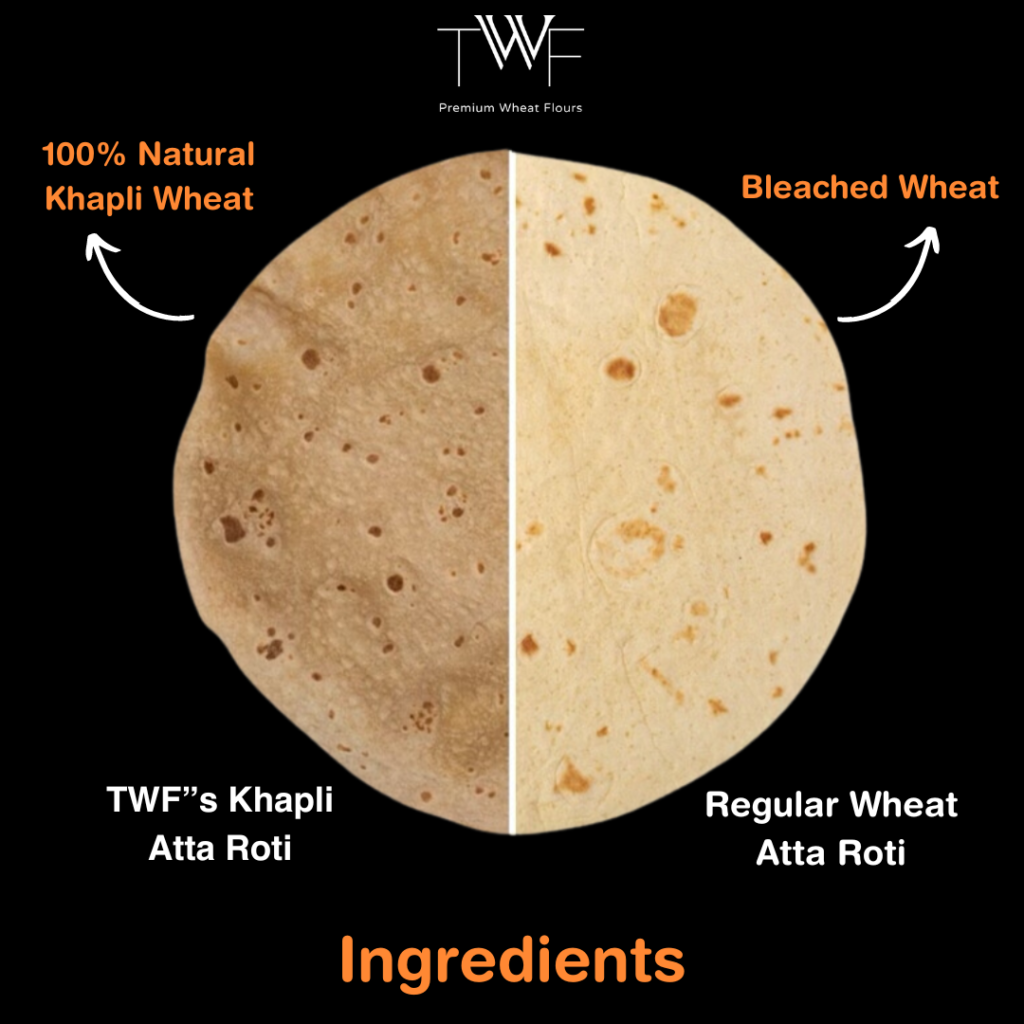Khapli Wheat: What It Is and Why You Should Care?
We knead to talk about wheat flour! It binds, and thickens, transforming simple ingredients into delicious recipes. But there is so much more to this basic flour waiting to be explored. As you already know, a variety of wheat grains are available in the market. Each of these varieties have unique textures and flavors, making them perfect bases for creating everything from fluffy rotis to delicate pastries.
Today, we’ll explore one such unique flour – Khapli Wheat. It’s an ancient wheat grain that has a long and rich history. This heritage flour is making waves in kitchens everywhere, and for good reason.
What is the history of Khapli Wheat?
For those unaware, Khapli Wheat, also known as Emmer wheat, is a heritage wheat grain that originated in West Asia. Experts believe it dates back to 10,000 years ago when civilization saw its biggest transformation towards farming from hunting.
What does Khapli mean?
Basically, “Khapli” means “crusty” in Marathi. It is an ode to the tough outer hull that protects the precious inner kernel. This robust shell adds a distinct character to the grain, extending its shelf life.
Many modern varieties of wheat go through extensive breeding for higher yields. But, the best part of Khapli Wheat is that it largely remains unchanged. This is why Khapli or Emmer wheat boasts a unique set of nutritional values that’s generally lost in its modern counterparts.
Khapli Wheat vs. Modern Wheat:
Khapli Wheat grain’s rich lineage sounds interesting, isn’t it? There are so many modern wheat options readily available, are you wondering – is it worth the switch?
Don’t worry, we have got answers to your queries. Here are some of the surprising list of benefits that might just convince you to give the Emmer wheat variety a try. But trust us, once you start using Khapli Wheat, you won’t want to go back.

- Fiber: Khapli Wheat has significantly higher fiber content than modern wheat varieties. From promoting digestive health to blood sugar level management, this one definitely stands strong in the dietary fiber department.
- Protein: The genetic make-up and some external factors have reduced the protein content in modern grains. But Khapli on the other hand has a good source of protein, making it a well-rounded choice for a balanced diet.
- Mineral: Many studies have shown concern about the declining mineral values in modern wheat varieties compared to older wheat grains. Emmer or Khapli Wheat, on the other hand, is packed with essential minerals like zinc, magnesium, and phosphorus.
- Gluten Content: When it comes to wheat, the most commonly asked question is “Is this gluten-free?”. Well, first things first. Gluten is basically a naturally occurring protein in wheat, barley, and rye. Contrary to some beliefs, there’s no such thing as a truly gluten-free wheat variety. However, the amount of gluten content can vary. Khapli Wheat has a remarkably lower gluten content than modern varieties.
- Glycemic Index (GI): The GI measures how quickly a food spikes your blood sugar levels. Therefore, the lower the GI, the slower the rise, which is generally considered better for overall health. Khapli Wheat possesses a lower GI than modern wheat. This helps regulate blood sugar levels and makes it a great option for diabetics or those managing their weight.
Why Khapli Wheat is best for your Culinary Adventures:
Have you ever felt like your dishes are missing a certain…spark? Well, incorporating this flour into your culinary creations can make a difference. Whether you are health conscious, someone who wants to explore wheat varieties, or bakers seeking a wholesome alternative, it’s time you stocked up your pantry with Khapli Wheat.
Here are a few brief ideas on what you can do with this ancient wheat variety:
1. Rotis and Phulkas: A staple in many households, switching to Khapli Atta can be definitely beneficial. It offers a robust bite with a satisfying chew.
2. Dalia (Porridge): If you are looking for a comforting breakfast option, Dalia is the best. Khapli Wheat dalia provides sustained energy due to its high fiber content.
3. Upma: Switch semolina with Khapli Wheat and take this savory South Indian dish to a new level! This unique wheat adds a distinct texture and nutrients to your dish.
Additionally, Emmer wheat can also be used to make wheat dosa, paratha, khichdi, etc.
If you are a baker feeling stuck with the same old wheat flour, then Khapli or Emmer wheat might be your new best friend. It’s a perfect way to create healthier versions of your favorite baked goods. It might take a little tweaking in your recipes due to its denser texture, but trust us, the possibilities are endless.
1. Rustic Bread: Khapli Wheat flour adds a beautiful texture and a deep, earthy flavor to sourdough loaves and artisan bread.
2. Cookies and Bars: Khapli Wheat flour can be used in a portion alongside regular flour to create fiber-rich cookies and bars.
3. Pastries: Experimenting with a blend of Khapli Wheat flour and other flours can lead to delicious pastry creations.
Where to buy Khapli Wheat flour?
Interest in Khapli wheat is on the rise. With its impressive nutritional profile, it’s no wonder that supermarkets are slowly beginning to stock it up on their shelves. You can easily find them at many health food stores or online retailers.
For those eager to experiment with this heritage grain, TWF flour is the perfect way to get started. TWF’s authentic Khapli or Emmer wheat is sourced from trusted farms and undergoes meticulous processing to retain its nutritional value. Plus, it’s conveniently available to order online.
Frequently Asked Questions (FAQs)
Q1: Is Khapli Wheat gluten-free?
While it has a lower gluten content than modern varieties, it’s important to remember it still contains gluten. This means it might not be suitable for individuals with celiac disease. However, for those with milder gluten sensitivities, this ancient wheat grain could be a potential option – it’s always best to consult with a healthcare professional before making any dietary changes.
Q2: Where can I buy Khapli Wheat flour?
More and more people are discovering the rich quality and health benefits of Emmer Wheat flour. Thanks to this growing popularity, it’s becoming increasingly available at local supermarkets and health food stores. You can also easily find it at online retailers. TWF’s high-quality flours have been a customer favorite and you can order your Khapli Wheat today by following this link.
Q3: How does Khapli Wheat taste?
It has a distinct and robust flavor profile flavor profile. Some may find the tasty slightly nutty on their palate. This unique taste can be well-balanced depending on your recipe and combination with other ingredients.
Q4: What are the benefits of using Khapli Wheat for baking?
It’s a great option if you love experimenting with your baking recipes. Emmer wheat flour can bring out a unique texture and depth of flavor. Additionally, it offers a source of extra fiber content and protein, making your creations more nutritious.
Q5: Are there any challenges associated with baking with Khapli Wheat flour?
Due to its denser nature, Khapli Wheat flour may require slight adjustments when used in recipes. It might absorb less liquid, and baked goods may have a slightly different texture. Experimentation and recipe adjustments are key to achieving successful results.
Well, that’s all folks. Khapli Wheat is a great and nutritious alternative to your regular wheat atta. Switching to something new can be overwhelming, but with Khapli Wheat flour, you are bound to enjoy it. Hurry up, get your Khapli Wheat atta today, and begin your journey towards well-being and culinary delights.


Responses